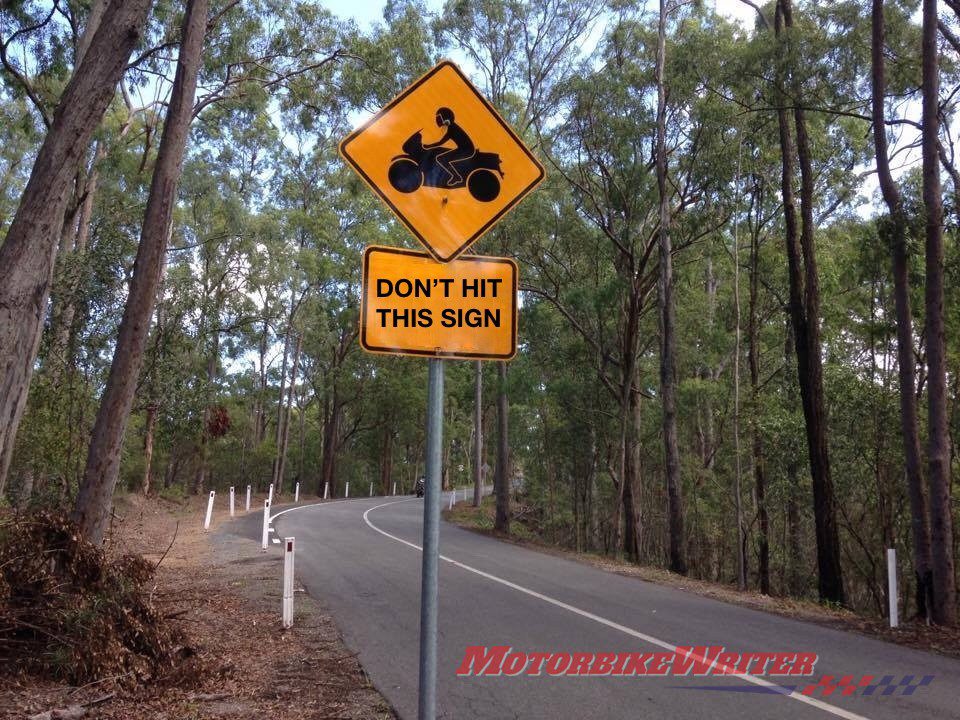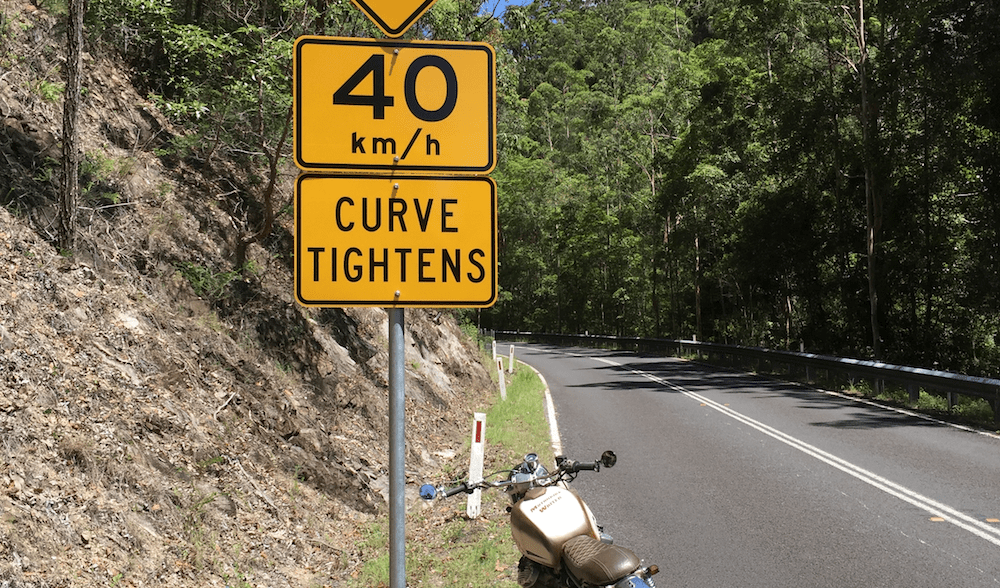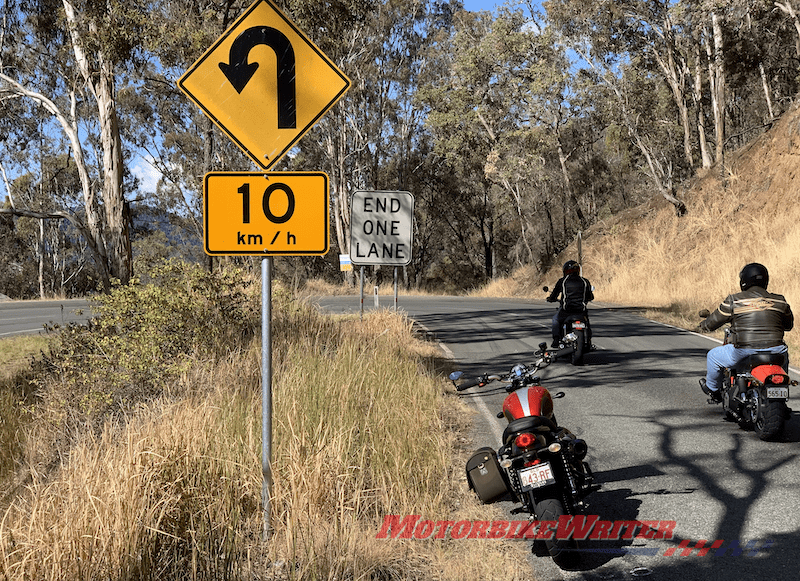Future motorcycles might be able to issue warnings to tell you if you have chosen the right apex and speed for a corner, regardless of the posted advisory speed.
Working on the fact that turns taken too quickly or sharply are responsible for nearly a fifth of all motorcycle accidents and 15% of fatalities, researchers have investigated how to alert riders of their errors.
The research is being undertaken by a group from ETH Zurich and KU Leuven who have proposed a solution in their paper “Learning a Curve Guardian for Motorcycles“.
(In case you have heard the name “Leuven” before, they’re the Belgian consultancy to issue the Transport & Mobility study that found if 10% of all private cars were replaced by motorcycles, it would reduce traffic congestion by 40%.)
No roadside signs
Researchers Alex Liniger and Simon Hecker say roadside signs with arrows and advisory speeds are not good enough.
In our experience, most advisory speed signs in Australia, like the one above, are actually wildly conservative!
This system would ignore the posted speed sign and provide a real-world alert.
“What we designed is a curve warning system for motorbikes which can alert the rider when they are approaching a curve too fast,” they told us.
“The system performs this task by first calculating the roll angle and the position within the lane of the motorcycle, based on a camera mounted on the front of the motorbike.
“Second, the system queries information about the road ahead from so-called HD maps, which are precise maps for navigation with additional information, such as the road geometry (curvature, inclination) and road attributed information (speed limits).
“With this information, we use a motion-planning algorithm to plan the optimal path and consequent manoeuvre of the motorcycle for the next 200m.
“This path can be seen as the ideal manoeuvre to ride the curve and includes safety margins.”
“We now compare the motorcyclists current manoeuvre to this ideal, calculated manoeuvre and warn the rider if they need to brake or turn too rapidly to align with the ideal manoeuvre, as this would indicate that the driver is reaching the physically safe limits of their motorcycle and riding ability through the curve.”
Warning signs

This warning could be conveyed to the rider either visually on the bike’s instruments, through haptic pads (vibrations in the bars or seat) or through a head-up display in the rider’s helmet. That would be up to the motorcycle or helmet manufacturers who apply this research.
Alex and Simon say their system does not use road signs to warn the rider.
“This allows the system to warn the rider even if the speed limits do not change for a curve ahead,” they say.
“This is common in Switzerland and throughout Europe, where the speed limit for the case study curve in the paper is 80km/h, but the rider needs to slow down to 35km/h to safely manoeuvre through the curve.”
They say their technology also uses map-based road geometry which would warn the rider if the curve is blind or has an unexpected changing curvature.
Early warnings
Their early warnings compare with safety systems such as ABS and EBS, which only take action when the rider has already “crossed the limit of handling”.
“Our system is designed to only warn the rider and not intervene, thus it is actually less invasive than current safety systems and helps to keep the riding experience pure,” the say.
Their research paper so far only shows preliminary results and they say further work is necessary to allow this system to run real-time on a motorcycle.




